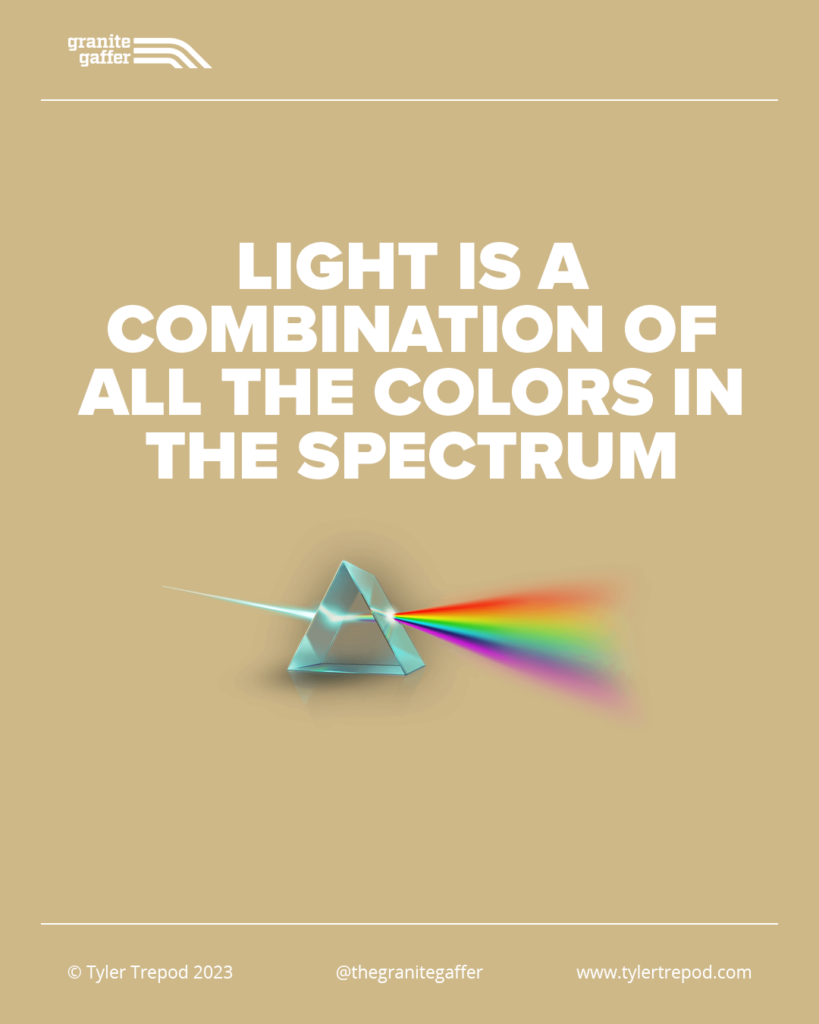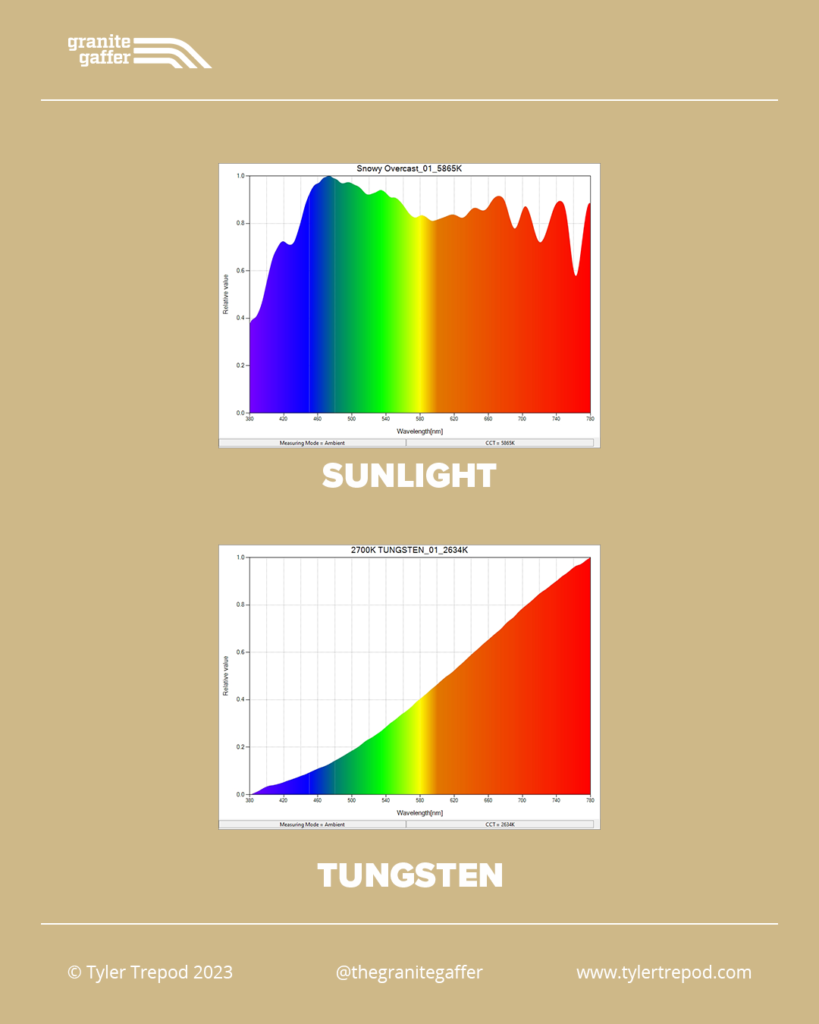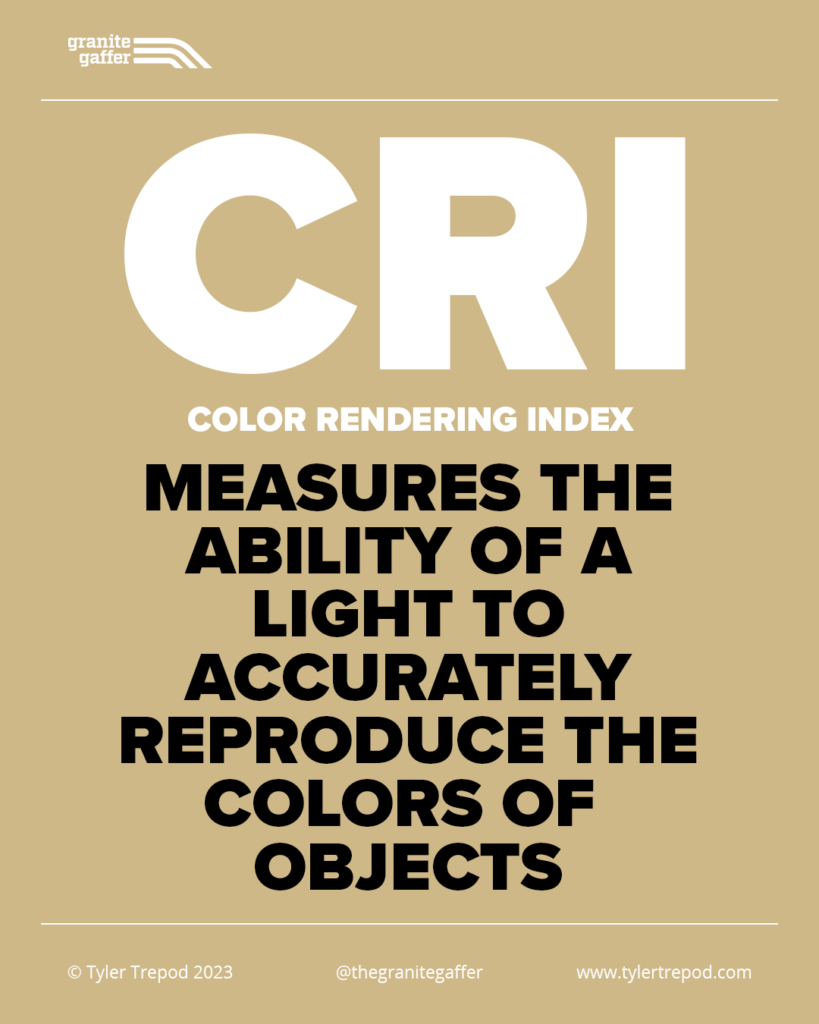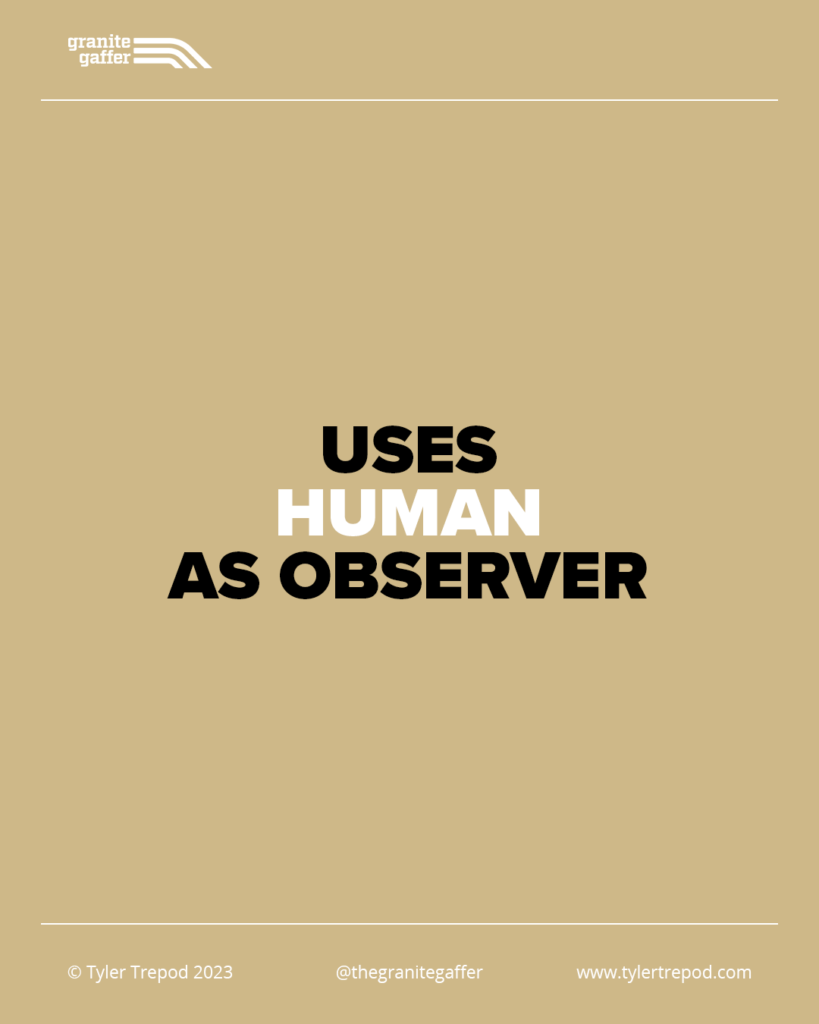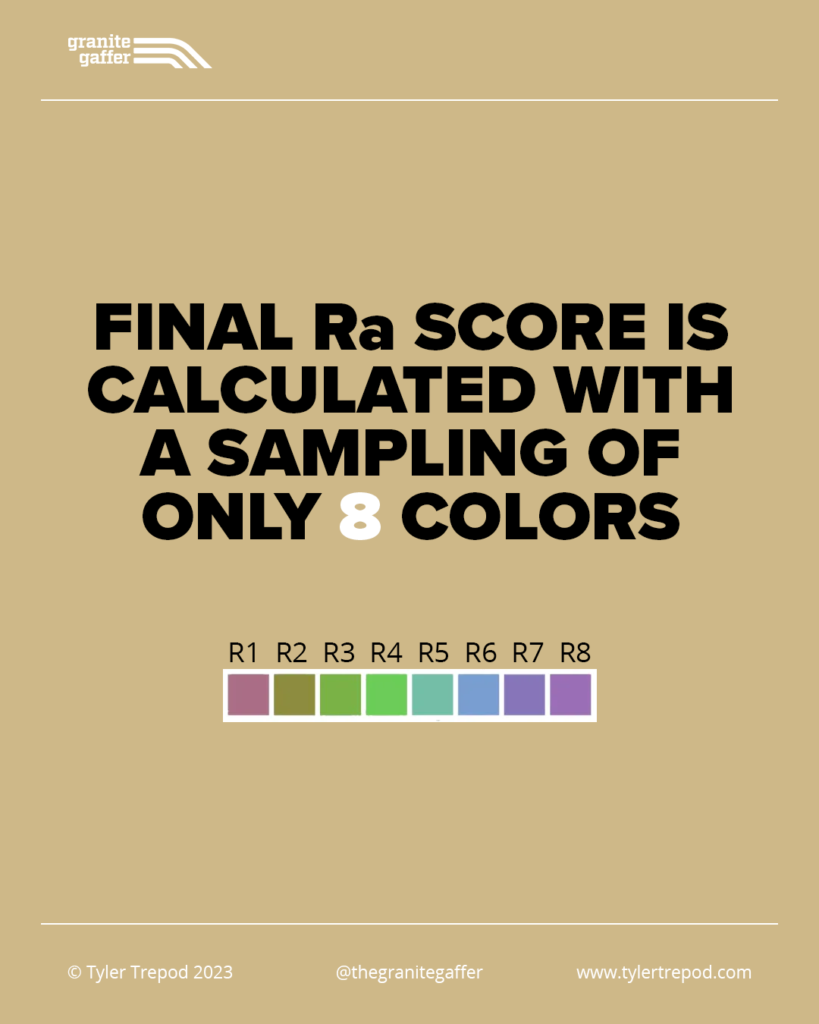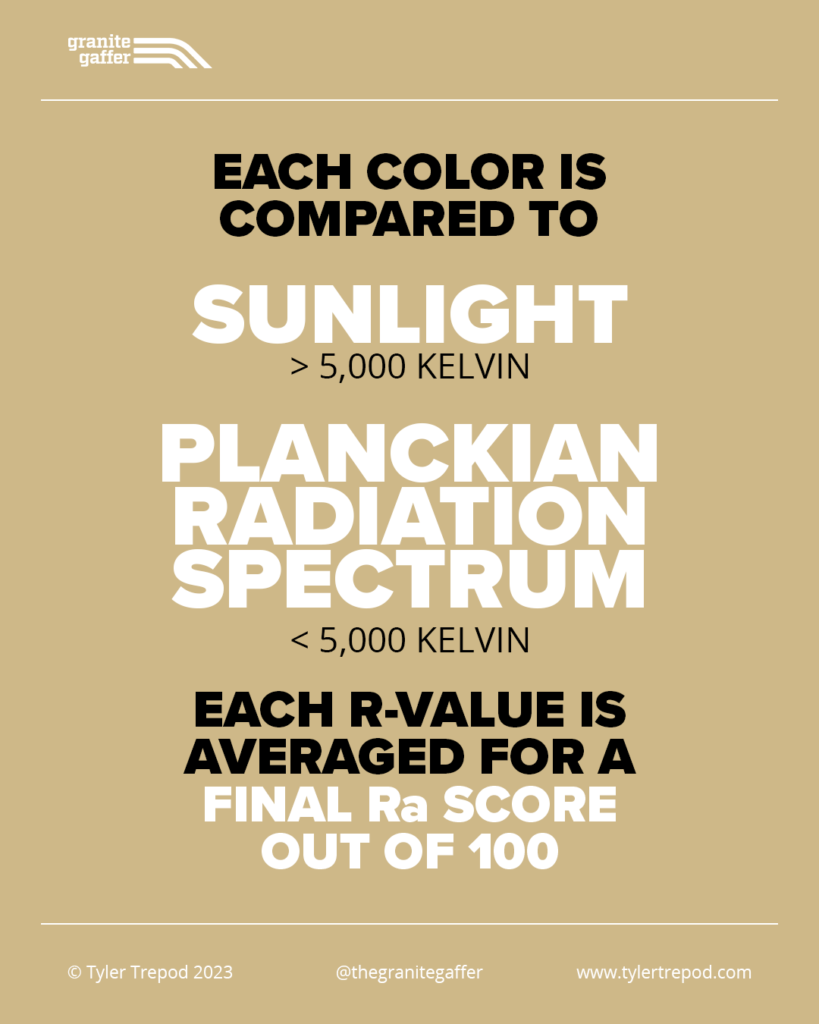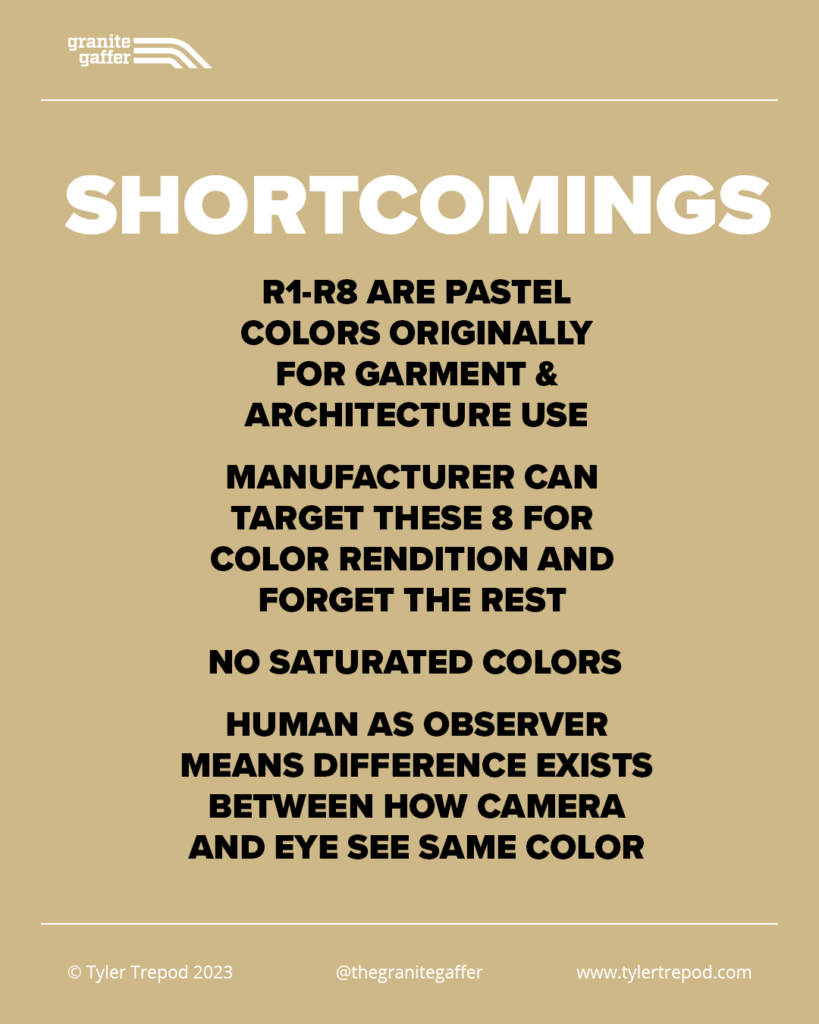guide: CRI
Manufacturers like to tout their 95+ CRI scores as a sign of a light’s quality, but let’s dive into why a high score doesn’t necessarily mean a good light, and why CRI as a metric is being retired! 🤓

summary
Light from any source isn’t just a single color, but contains varying amounts of all the colors in the spectrum. This is why you get a rainbow when you shine daylight through a prism.
Differences in the spectral output of lights equates with differences in how colors are rendered to us and to our cameras. That’s why things under daylight look a certain way, and look another under tungsten.
CRI was the first method used to measure the differing outputs of man-made lights like fluorescents and HMI’s. By illuminating a sampling of 8 test colors, referred to as R1-R8, and comparing the readings to known standards of either daylight or a blackbody locus (aka tungsten light), an average value, Ra, can be obtained.
The closer to 100 this Ra value is, the better performing the light is assumed to be.
A few reasons using high-CRI lights outside of the film industry matters: clothes manufacturers want you to see the true color of their garments in displays, museums use them for proper color rendition in artworks, and even grocery stores want produce to look healthy and fresh.
This is also why CRI is based on “human observer”, or how the eye would perceive colors under ideal daylight conditions, because it was originally designed for usage in the architecture and textile industries.
CRI is becoming an outdated metric, however, as the 8 chosen colors are desaturated, lacking in skin tones, and don’t reflect the color rendering capabilities of modern cameras. An attempt was made to add more colors to the test palette, but these new R9-R15 values still aren’t used when calculating Ra.
Lastly, because there’s only 8 test hues, manufacturers can target the color rendition of these specifically and ignore the rest of the rainbow. This can lead to lights that may score impressively, but that don’t actually work as intended, giving particularly wonky skin tones as a result.
